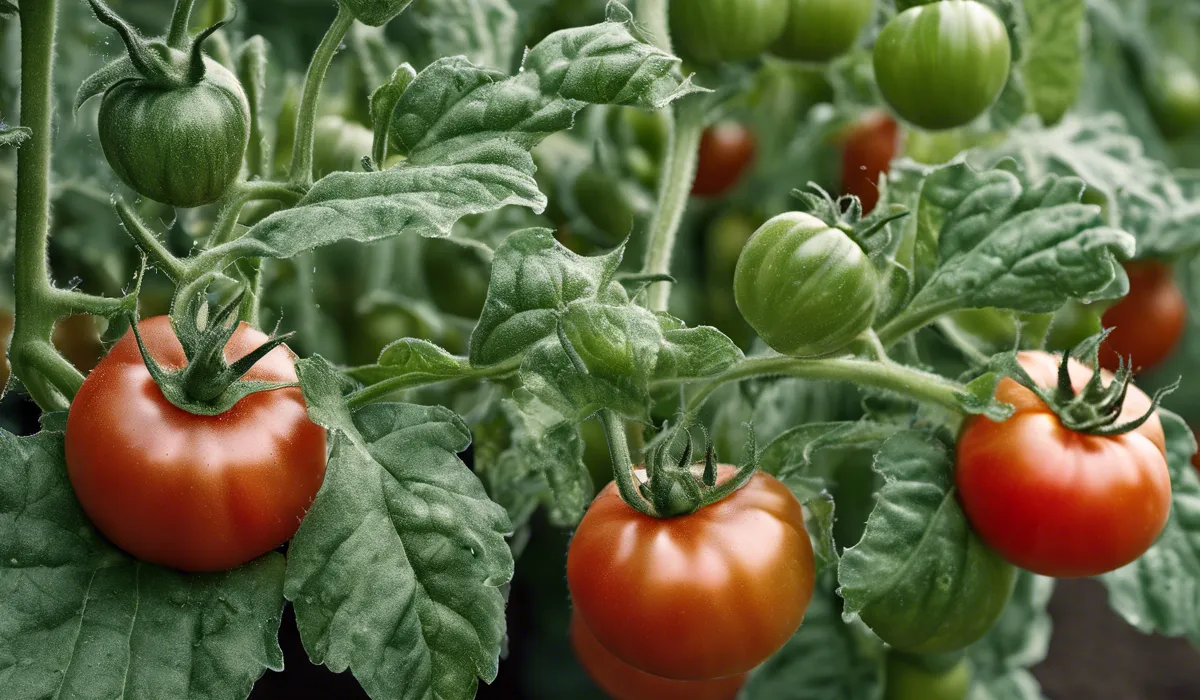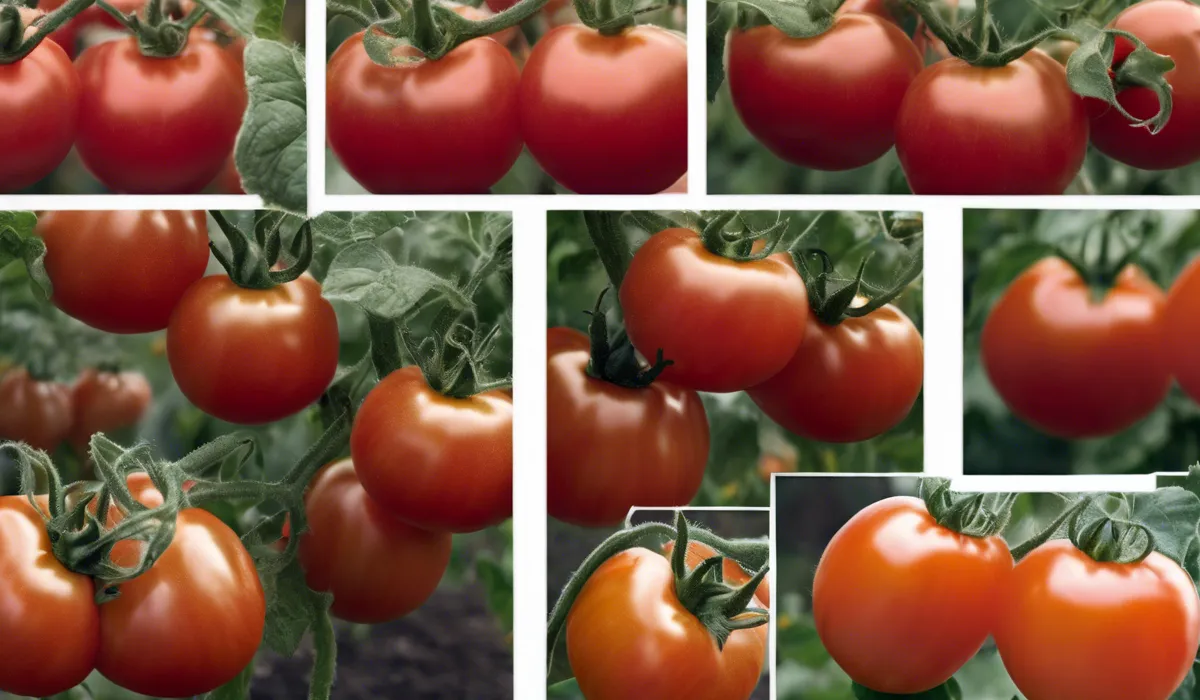To treat powdery mildew on tomato plants, remove affected leaves, increase air circulation, and apply a fungicide suitable for tomatoes. Avoid overhead watering to keep leaves dry and reduce mildew spread. For organic treatment, use a baking soda and water mixture or neem oil.
Understanding Powdery Mildew on Tomato Plants

What is Powdery Mildew?
Powdery mildew is a common fungal disease that affects a wide range of plants, including tomatoes.
It is characterized by white or gray powdery spots on the leaves and stems of plants. This disease thrives in warm, dry climates with cool nights, and it can spread rapidly if not controlled.
Causes and Favorable Conditions
Powdery mildew is caused by various fungal species that are highly adaptable to different environmental conditions.
High humidity levels combined with moderate temperatures typically create the perfect environment for powdery mildew to flourish. Poor air circulation and overcrowded plants also contribute to its spread.
Identifying Powdery Mildew on Tomato Plants
On tomato plants, powdery mildew usually appears as white, powdery spots on the upper surface of the leaves.
Over time, these spots can grow and cover the entire leaf surface, eventually leading to yellowing and browning of the foliage.
Potential Impact on Plant Health and Fruit Yield
If left untreated, powdery mildew can weaken tomato plants, making them more susceptible to other diseases and pests.
The disease can reduce the plant’s photosynthetic abilities, leading to a lower fruit yield and affecting the overall quality of the tomatoes.
Preventative Measures for Powdery Mildew

Selecting Resistant Tomato Varieties
One of the most effective ways to prevent powdery mildew is to choose tomato varieties that are resistant or tolerant to the disease.
These varieties have been bred to withstand the fungal spores that cause powdery mildew.
Improving Air Circulation with Proper Planting
When planting tomatoes, ensure that there is enough space between plants to promote good air circulation.
This helps to reduce humidity around the foliage and can prevent the growth of powdery mildew.
Watering Techniques to Minimize Humidity
Water tomato plants at the soil level rather than from above to keep the foliage dry.
Drip irrigation systems are ideal for this purpose as they deliver water directly to the base of the plant, minimizing leaf wetness and reducing the risk of fungal diseases.
Early Detection and Regular Monitoring
Regularly inspect your tomato plants for signs of powdery mildew. Early detection is crucial for effective control.
Look for the characteristic powdery spots on the leaves, particularly on the lower leaves, which are more likely to be shaded and moist.
Sanitation and Removal of Infected Plant Parts
Practicing good sanitation by removing and destroying affected plant parts can help prevent the spread of powdery mildew.
Ensure to clean your gardening tools after use to avoid transferring spores to other plants.
Treatment Options for Powdery Mildew

Organic Treatments and Home Remedies
For those who prefer organic methods, a baking soda solution can be a safe and effective treatment.
Mix one tablespoon of baking soda with a gallon of water and a teaspoon of liquid soap. Spray this mixture on the affected areas of the tomato plants to help control powdery mildew.
Another home remedy is using a milk spray, which involves mixing milk with water in a 40:60 ratio and applying it to the plants.
Using Chemical Fungicides Safely
When organic measures are not sufficient, chemical fungicides can be an option. Choose a fungicide that is labeled for use on tomatoes and powdery mildew.
Follow the manufacturer’s instructions carefully for application rates and frequencies to ensure the safety of your plants and the environment.
Adjusting Environmental Controls
Modifying the growing environment can help control powdery mildew. Reducing humidity by increasing ventilation and ensuring that the plants receive adequate sunlight can make conditions less favorable for the disease to develop.
Applying Treatments Correctly
When applying any treatment, whether organic or chemical, it is important to cover all parts of the plant, especially the underside of leaves where powdery mildew often starts.
Apply treatments in the early morning or late afternoon to avoid direct sunlight, which can cause the leaves to burn.
Ongoing Care After Treatment
After treating powdery mildew, continue to monitor your tomato plants for signs of the disease.
Repeat applications may be necessary, and ongoing care will help prevent recurrence. Keep up with preventative measures to maintain the health of your tomato plants.
FAQs About Treating Powdery Mildew on Tomato Plants
How can I identify and treat powdery mildew on my tomato plants?
To identify powdery mildew, look for white or gray powdery spots on the leaves. Treat it by removing affected leaves, improving air circulation, and applying a fungicide that is safe for use on tomatoes.
Can I prevent powdery mildew on my tomato plants?
Prevent powdery mildew by keeping the leaves dry, providing good air circulation, and using resistant tomato varieties if available.
What fungicides are safe to use on tomato plants for powdery mildew?
Use fungicides that are specifically labeled for use on tomatoes, such as sulfur-based fungicides or those containing potassium bicarbonate.
Is there an organic treatment for powdery mildew on tomato plants?
Yes, an organic treatment option is a mixture of baking soda and water, or you can use neem oil to help control powdery mildew.
How can I increase air circulation for my tomato plants to prevent powdery mildew?
Increase air circulation by spacing plants properly, pruning to create an open plant structure, and using stakes or cages to keep the plants upright.
Final Thoughts
To combat powdery mildew on tomato plants, promptly remove any infected foliage, enhance air circulation around the plants, and apply a tomato-friendly fungicide.
Keep foliage dry by avoiding overhead irrigation, thereby minimizing the risk of mildew proliferation. For those preferring organic methods, consider treatments with diluted baking soda or neem oil.
